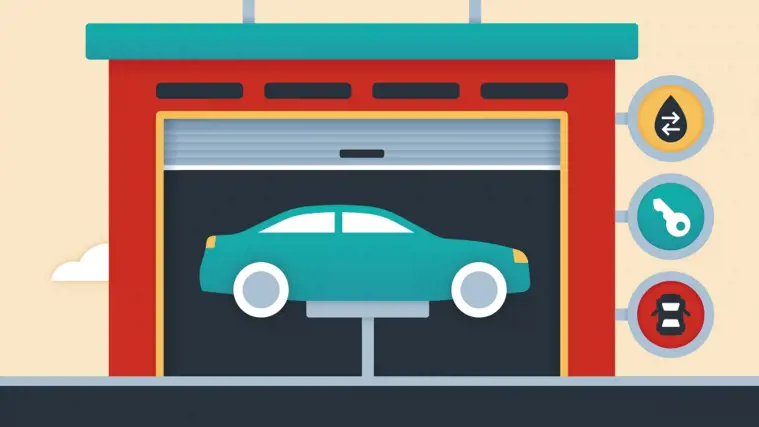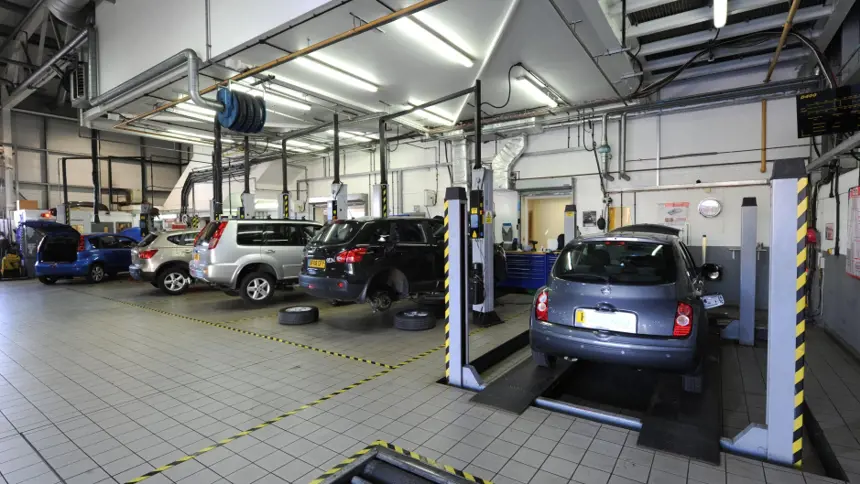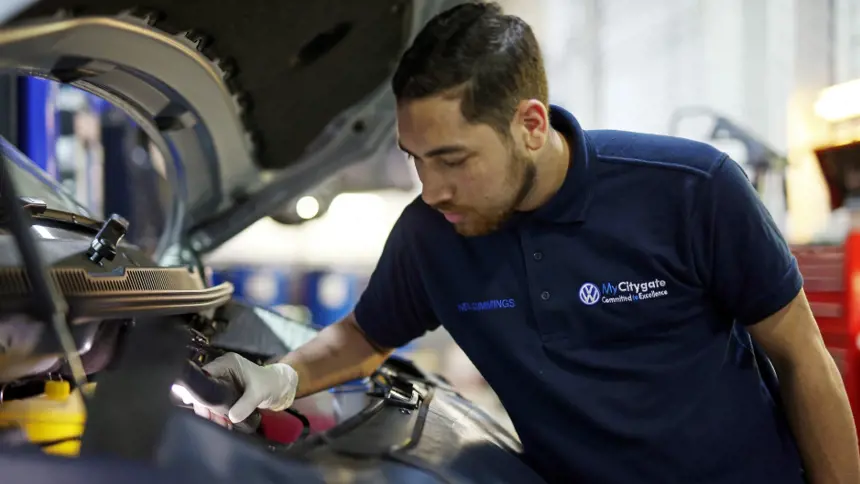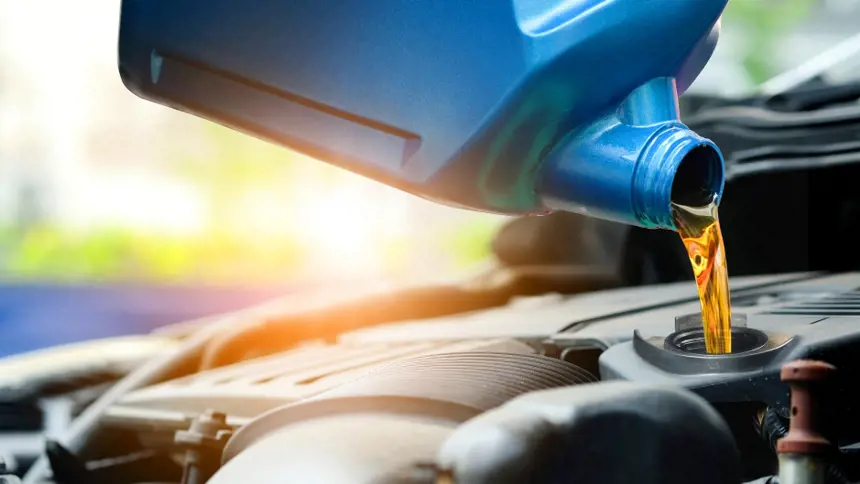What is a full service history?
A full service history means a used car has been serviced on time every time, but how do you know whether a car really has a full history?

Trying to find the perfect used car? You've no doubt spent hours scouring the second-hand market for the best price, the lowest mileage and the exact specification you're after. But, this one more thing that is arguably even more important than all of that, you need to know that the car you're buying has been well maintained and isn’t hiding any impending mechanical problems. This is where the service history comes in.
A car’s service history will provide a rundown of all the maintenance work that has been undertaken on the car throughout its life. A full service history will allow you to confirm that the car has received all of the servicing recommended by the manufacturer, and whether these were carried out at the correct times/mileage.
Things like timely oil changes should help to ensure the greatest possible reliability of a car as it gets older. Many cars may not have a full service history but could have a 'part service history'. This refers to cars that have been serviced, but not as regularly as recommended by the manufacturer.
Cars with a part service history can vary quite significantly in terms of how much maintenance they have actually had. One car may have missed only one service out of five, for example - which is likely to have little impact on overall reliability. Another car, however, could have gone for many years and miles between services, meaning it has been running on older and degraded oils and filters - this could then cause premature wear to the engine.
BuyaCar offers cars from reputable dealers, a vast majority of which will have a full service history or a nearly full history. This means that you can have the confidence that these cars have been well looked after. If in doubt, it's always a good idea to confirm exactly how much service history comes with a specific car.
Keep reading to find out more about what a car's service history should show, and how you can spot if a car has been properly looked after or not - as well as what to do once the car is yours to ensure you keep up its level of maintenance.
What does a full service history mean?

When buying a used car, there may be no immediate way of knowing how that car has been treated by a previous owner. Even if a car looks clean with straight bodywork, it could still have been mechanically neglected. You don't want to be forking out on something that's going to prove unreliable and costly further down the line, so you may want to avoid any cars that haven't been serviced for many years at a time.
Once you’ve bought a car, being sure to upkeep the maintenance - such as having servicing carried out on time - will not only help to keep the car in reliable condition, but will also help in maintaining its value when the time comes to sell it on. If you are financing a car, upkeep of the full service history may be a requirement of the contract, so be sure to read very carefully before signing, otherwise you could face additional charges.
Essentially, a full service history will show that a car has been well looked after, with oil changes carried out on time and parts that are known to have a limited lifespan being replaced before they become unreliable - all of this is crucial in keeping the engine in a healthy state of condition.
Many car manufacturers offer fixed-price servicing packages for those purchasing a brand new car that can help to make maintaining a full service history more cost effective. So, if you're looking for used cars that are only a few years old - possibly still even covered by the original manufacturer warranty - that should mean you're finding models with pristine service histories, as they should have been cared for by the manufacturer.
What does a full service history look like?

A full service history usually means that the car’s service book has been stamped by the garage to confirm the relevant work has been completed, with receipts for the specific work carried out and parts fitted normally being provided.
It should be stamped with the name and address of the garage and dated, with details like the mileage reading of the car and what level of service has been undertaken. Some services in a car’s scheduled service life will be small while others will be much more extensive - it’s important that services are carried out at the correct intervals to keep the car in the best possible condition.
However, many manufacturers now log servicing online, rather than stamping a physical service book, so there may not be a physical, stamped book with the car that you're looking at. If that's the case, you should be able to get a printed copy of the online database record to confirm exactly how many services the car has received and when. Most manufacturer main dealers should be able to confirm how many services have been carried out - either by simply providing the number plate or the VIN (Vehicle Identification Number).
Do I have to take my car to a dealer?

This is where the definition of precisely what constitutes a ‘full service history’ can get a bit blurry. In the eyes of some people, as long as a car’s service book has been filled in and stamped at appropriate intervals and maintenance checks have been carried out to the appropriate service level, then that counts as a full service history.
Others would insist that a car has to have been looked after by a manufacturer’s main dealer in order to be classed as having a full service history. Though both should prove that the car has been professionally maintained throughout its life, some prefer the added benefits of a car being maintained by a mechanic who has been trained by and specialises in a particular brand.
If searching for a dealer-serviced used car, one way to ensure this is to buy through a dealer’s ‘approved used’ scheme, as these tend to only include cars that have been serviced within the dealer network, though it's worth checking this when looking at specific cars. Another way is to look for advert descriptions that talk about a car having a ‘full dealer service history’ or 'full manufacturer service history'.
If a car doesn’t have a full dealer service history, but still has a full book of service stamps, then it’s worth gauging the type of garage that has carried out the servicing. If you're looking at a basic mainstream car, such as a Ford Fiesta, pretty much any garage with a good reputation should be able to do a perfectly reasonable job.
Meanwhile, if the vehicle you’re considering is a luxury or specialist model - such as a complex off-roader or plug-in hybrid - then it's a good sign if it has been maintained by a garage that specialises in that particular make or type of car, as these businesses are likely to be better equipped to keep these cars in good condition.
One significant advantage of opting for a car with a full dealer history is that you should be able to contact them if you need more details of other major work that has been previously carried out on the car - such as a cambelt change - as their computer systems should have a record of all the work they have carried out.
How and when should a car be serviced?

Most cars require servicing at specific intervals. Normally this is after a certain amount of miles or a set time period - whichever comes first. This is to ensure that parts on high-mileage cars don’t wear out or, if you cover relatively few miles, that parts or fluids with a specific life (i.e. rubber parts that might perish) are changed regularly enough.
To find out the particular service intervals relevant to your car, you can check in the manual or visit the manufacturer’s website. Many modern cars will actively warn you when they are due for a service - with service warning lights or a readout of which service is needed. Some have ‘variable’ service intervals, too, where the car’s systems monitor how it’s getting driven and can adjust the service requirements accordingly.
Should you cruise gently up and down the motorway every day, the car may decide there's no need for a service just yet. If you spend all your time zooming around town, frequently using the brakes and accelerating hard, a service may be needed sooner to ensure that the engine and brakes remain in good condition.
No matter how a car is driven, though, regular servicing is important - a car that has been serviced every year or two is likely to last longer than one that has only been serviced every four years.
Also bear in mind that dealers may not honour the original manufacturer warranty if a car has missed services - either being serviced late or with individual services being skipped completely. If in doubt, it can be useful to check a car’s service intervals with the manufacturer to establish whether a car has a full service history or not.
Another option to bear in mind is that it's possible to purchase a standalone used car warranty. Click here to find out how extended used car warranties work.
